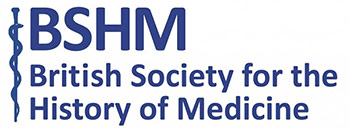Edwin Aird describes how Marie Curie created radiological cars to take X-rays to the battlefront in Word War I.
In 1914 at the beginning of the First World War, Paris was under threat of invasion from Germany. The situation was sufficiently alarming that the French Government moved to Bordeaux. And Marie Curie moved the precious 1 gm of radium that she had isolated to deposit in a bank in Bordeaux in a very heavy lead pot.
Once the radium was safe, Curie returned to Paris, where one of her daughters took her to visit a hospital to see the war wounded. Curie quickly realised the potential value of having X-rays near the battle front for surgeons to use. As her daughter Eve Curie wrote: “A luxury, the magic arrangement whereby a rifle bullet or fragment of shell could at once be discovered and localized in the wound.”
She already understood the properties of X-rays, but taught herself their application, production and development, fluoroscopy (not so called at the time), and the components of X-ray systems, generators, transformers etc. To get the X-ray machines to the front, however, meant mobile units or radiological cars. And they did not yet exist. So she created them.
Les Petites Curies
Founding director of the Red Cross Radiology Service, Curie built her first radiological car from a large Renault. She persuaded wealthy acquaintances and the Union of Women of France to help her build a fleet of 20 radiological cars. They became known as Petites Curies. Her daughter Irene, (who later received a military medal and won a Novel prize herself with her husband, F. Joliot) assisted in the field.
The conditions under which Curie worked must have been horrendous, but she played down the overall impact of the noise/smells/dangers. Eve Curie said: “She was never to speak of the hardships and dangers to which she exposed herself during those four years… She showed her working companions a careless and even gay face…The war was to teach her that good humour is the finest mask of courage”.
According to Marie Curie herself, during these years it had been possible to X-ray approximately 900,000 injured people. She wrote: “Towards the end of 1918 there were more than 500 fixed and semi-fixed radiological stations in service in the hospitals of the territory and in the armies with a further 300 mobile devices on cars, on sterilisation trucks and motor surgical ambulances. Approximately 400 radiologists served these devices, aided and partly replaced by auxiliary personnel, including manipulators trained at the Institute Curie.”
Marie Curie died in July 1934 from pernicious anaemia, which she attributed to the high X-ray exposures she received during the war.
She remains one of the few people to receive two Nobel Prizes and the only woman to do so. The French Academy of Sciences rejected her membership in January 1911 – only months before her second Nobel Prize. It never elected her. Otherwise, her brilliance, drive and public service were widely acknowledged. In total, she received 8 major prizes, 16 medals, 104 titles and authored 483 papers.
References and further reading
- Curie, Maria, “La Radiologie et la Guerre” (in French) : Marie Curie. Librairie Felix Alcan 1921
- Curie, Eve, “Marie Curie”: (1938, Windmill Press Surrey)
- Van Tiggelen, Rene (Brussels), “La Grande Guerre 1914-1918”
- Simthsonian Magazine Oct 2017
- Jogensen, TJ BJR Papers: “Marie Curie and Pierre Curie and the discovery of radium” by Eve Curie BJR July 1950;” Marie Sklodowska Curie 1867-1934” by Claud Regaud BJR, Sept 1934
- Thomas, Adrien, “The first 50 years of military radiology 1895-1945” European J Radiology 2007; 63: 214-219
- https://www.pbs.org/newshour/science/the-day-marie-curie-got-snubbed-by-the-french-science-world
Edwin Aird is retired Director of Medical Physics at Mount Vernon Hospital, Northwood with more than 40 years in NHS as researcher, teacher and examiner.



